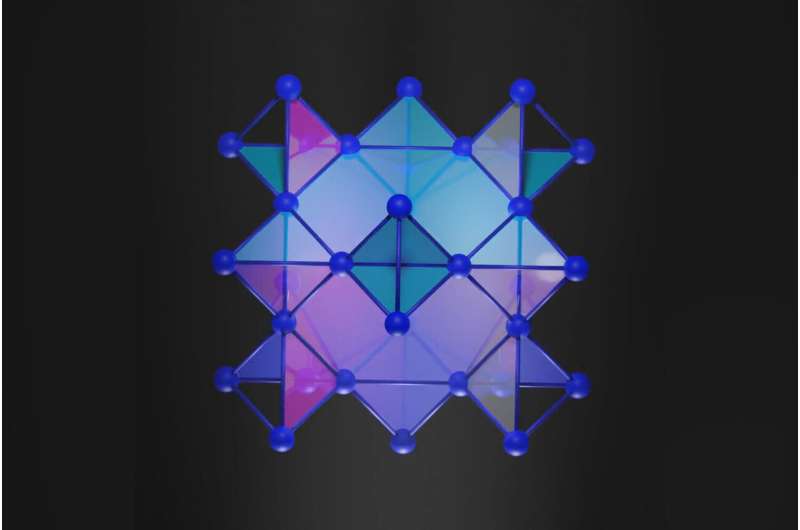November 11, 2023 report
This article has been reviewed according to Science X's editorial process and policies. Editors have highlighted the following attributes while ensuring the content's credibility:
fact-checked
trusted source
proofread
Saturday Citations: A big old black hole, polar bears in bad decline, building a jail for electrons

This week, we covered developments about a record-breaking black hole, the continued plight of polar bears, ChatGPT trying to learn intuition and more. Don't worry if you missed those stories. We've got you covered here.
Singularity superannuated
It's hilarious to think that black holes were once such an extreme concept that Albert Einstein, a man so brilliant that his name would become a sarcastic rejoinder denoting incompetence, simply could not accept them as a real-world phenomenon even though they were an inevitable consequence of his own work.
Well, time passed, physics advanced, optics increased, and today, we know that black holes have been around pretty much as long as matter in the universe. So who's laughing now, Einstein? This week, NASA reported the discovery of the most distant (and therefore oldest) black hole ever observed, dating to 470 million years after the big bang, when the universe was only 3% of its current age.
By exploiting gravitational lensing, the Chandra X-ray Observatory captured the supermassive black hole in a galaxy called UHZ1 3.5 billion light-years from the sun, and it provides a window into the early stages of black hole growth.
Particles detained
Electrons are way too busy carrying charge through a conductor to mess around with each other.—that's how much they believe in the grind, bro. But when they're trapped together, they descend to the same energy state and exhibit weird behavior, like teenage boys in detention. Unlike teenage boys, their exotic behaviors include superconductivity and other quantum phenomena.
This is called a flat-band state, which electrons in the wild are not known to experience. Oh, sure, you can trap them in a 2D material, but they can quickly escape via the annoying third dimension. But scientists at MIT have succeeded in trapping electrons in a pure 3D crystal with highly symmetric atomic geometry.
Study author Joseph Checkelsky, associate professor of physics, said, "Now that we know we can make a flat band from this geometry, we have a big motivation to study other structures that might have other new physics that could be a platform for new technologies."
Arctic calescent
For decades, researchers who predicted the impending (now well underway) climate crisis wondered what would happen to polar bears as sea ice diminished. And the unfortunate answer is that polar bears die, often by drowning or starvation. Polar bear populations are in retreat as melting polar ice decreases their habitat and diminishes the population of arctic seals; a new study shows a major population impact on polar bear numbers in Greenland over a 20,000-year period.
Assistant professor Michael Westbury and Professor Eline Lorenzen at the Globe Institute analyzed genetic material from polar bears to gain insight into their development and population history and found that their numbers experienced several deep declines since the last ice age.
Westbury says, "We see a disturbing connection between population decline and environmental changes. A relatively small increase in water temperature and a small reduction in the amount of sea ice result in a quite dramatic decline in the polar bear population. The relationship is not linear."
HunchGPT
I guess it's an unspoken truth that pharmaceutical researchers make a lot of breakthroughs through intuition—like, they're deep experts in difficult fields like organic chemistry, they spend all day for years rotating 3D ball-and-stick diagrams of steroid hormones in their heads, and then one day, they're stuck on a problem, so they go take a hot shower and blam—they have a sudden inspiration to synthesize urea by treating silver cyanate with ammonium chloride or something.
According to researchers from Novartis Institutes for Biomedical Research and Microsoft Research AI4Science, this kind of thing happens, and they explored methods to train an artificial intelligence system to seek new pharmaceutical breakthroughs by taking a hot shower. Or at least to apply intuition to the problem. They trained their system on data they compiled from a survey of of 45 chemists, who chose from a list of 220 chemical pairs the ones they had a gut feeling were candidates for new drugs.
The AI system ranked the responses, scoring each pair according to its own estimations that the drug would have useful applications. The researchers used these results to train a second AI system that designs molecules, and while they haven't cured cancer or anything, they produced results they say warrant future investigation.
© 2023 Science X Network




















